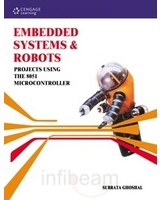Literature Review
Project Tittle: The Inception of Chedda: A detailed Design and Analysis of Micromouse
Author: Tondra De & Drew Hall
Hardware Development
The authors have decided to use stepper motors due to its precise movement control. Stepper motors can move in very small incremental steps as well as hold their position and resist turning, makes them perfect for Micromouse application. Bipolar steppers are stronger than unipolar steppers of the same size and weight because they have two times the field strength in their poles (single windings without a centre tap). Since space and weight are important constraints for the Micromouse, they have opted to use 2 units of bipolar hybrid stepper motors rated at 12 V DC and 400 mA. The motor controller selected for this project was Allegro 3967 which have continuous drive capability of 750 mA with a peak of 850 mA which is capable for handling higher current spikes during initial starting of the motor or if the motor becomes stalled, thus help to keep power dissipation at a reasonable level.
 |
| Bipolar Hybrid Stepper Motor from Jameco Electronics |
Since the Micromouse needs to run at full operation for around 20 minutes at a time, a battery capacity of around 300 mAH is required. Batteries with the smallest possible internal resistances are preferred to allow for the potential current surges. Another two significant practical issues that need to be considered regarding the selection of batteries are their size and weight since the space of batteries are quite limited and the mass of the batteries should have a lower weight to decrease the burden of the load on the motor torque. Finally, rechargeability is also an important property of battery that should be taken into account since the robot would operate for extended period of time. Therefore, the authors decided to use lithium polymer batteries with capacity of 1.2 Ah, 7.4 V DC and maximum current of 10A which capable to fulfil the power requirement of the robot. The lithium polymer batteries are selected due to their small size, compact and have the highest energy density of any currently available battery.
To achieve its goal of travelling to the centre of the maze, the Micromouse may require the sense of sight and/or touch, depending on the sensor technology (or combination of technologies) used. The sensor technology used in this project is infrared sensor technology and the sensors used are Sharp GP2D120 short-range infrared sensors for sensing distance to the walls of the maze. These IR sensors output a voltage relative to the distance of the sensor from an object ahead.
 |
| Sharp short-range infrared sensor |
A separate independent odometry was added to measure the distance travelled by the robot using a shaft encoder, which is a special sensor that measures the position or velocity of a rotating shaft. It is mounted on the output shaft of a motor.
The chassis of the robot is made of polyvinyl chloride (PVC) plastic because it has a good weight to strength ratio.



